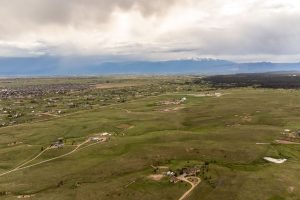Here we are at part 3 of the significant facts about the Denver basin and private wells. I hope the first two installments of this series have been useful. If you missed them, email me at tastokka@gmail.com and I will send you all three parts. Now for the rest of the story.
As the City of Colorado Springs develops northeastward toward Black Forest, development outside the city limits cannot access Colorado Springs Utilities renewable water. Without renewable water development, city densities will potentially use huge amounts of Denver Basin water. Sterling Ranch, The Retreat at TimberRidge and The Ranch will total 7,400 homes; whereas, the entire Black Forest has 6,600 homes with private wells. Insufficient groundwater exists under these developments to serve all the homes, so water rights on Sundance Ranch, Flying Horse North, High Forest Ranch, Cherry Creek Springs, Bar-X Ranch and McCune Ranch have been purchased to provide more water.
Cherokee Metropolitan District has purchased significant water rights in the Black Forest on Sundance Ranch, Flying Horse North, Shiloh Ranch and County Line Road. The state of Colorado has granted permission to pump 1,246 acre-feet of Dawson aquifer water per year from 23 well sites. Compared to rural areas, residential development with 5-acre lot densities is 10 times as much water use. To make matters worse, all the well sites are on the property boundaries so half of the water pumped belongs to neighbors. The water is currently being piped to supply 18,000 customers in southeast Colorado Springs.
Cherokee Metro District has four wells already drilled but only one is producing significant water. These wells cost around $750,000 each so the cost is huge. Do these wells suggest that commercial extraction may not be productive or economical in Black Forest? Transmissivity is the flow of water back and forth underground and in this area it may not be very rapid. Clay and sandstone don’t allow water to flow laterally easily. Water seems to be located in “pockets” within clay and sandstone layers. These “pockets” of water are sufficient for private wells but maybe not for commercial extraction. Water seems to not flow back into large wells fast enough to produce profitable results. This is an excellent example of “paper water may not equal real water.”
Several potential future projects could have a significant impact on groundwater. A developer has obtained rights to 39,000-acre-feet of water per year from Greenland Ranch between Monument and Castle Rock. Greenland Ranch is a conservation easement with thousands of acres of native grassland that will not be developed but will remain as open space. Front Range Water Company (Sun Resources) is proposing a 24-inch pipeline to serve new developments east of Denver. Placed in perspective, this is 35 million gallons of water per day they are allocated by the state of Colorado.
Another proposed project would pay farmers in the San Luis Valley around Alamosa to stop farming and sell their water to be piped to Denver. The San Luis Valley is a huge potato farming area and the water in the valley is already over-allocated, which means more water is promised by water rights than is available due to the decreased water coming from the mountain snow melt. There is huge opposition to this idea in the San Luis Valley, but it is mighty tempting to sell water rights when times are hard for farming.
In conclusion, there are several common sense principles that our legislators and commissioners should follow regarding Denver basin water. First, the Dawson aquifer should only be used for private wells. Second, all wells, including commercial wells, should be sited well away from property boundaries. Third, all urban density developments outside the city limits should be required to use renewable water only. Lastly, paper water does not equal real water. A water allocation from the state does not guarantee that the same amount of water is available underground. Remember, only about 60% of the water in the Denver basin is able to be extracted economically.
I hope this series of articles about the Denver basin and individual wells has been helpful for you. Next month, I am considering a series of articles about the Colorado River. That may seem remote and far away, but 70% of the water used in Colorado Springs comes from the Colorado River. That is scary.
See you next month.




